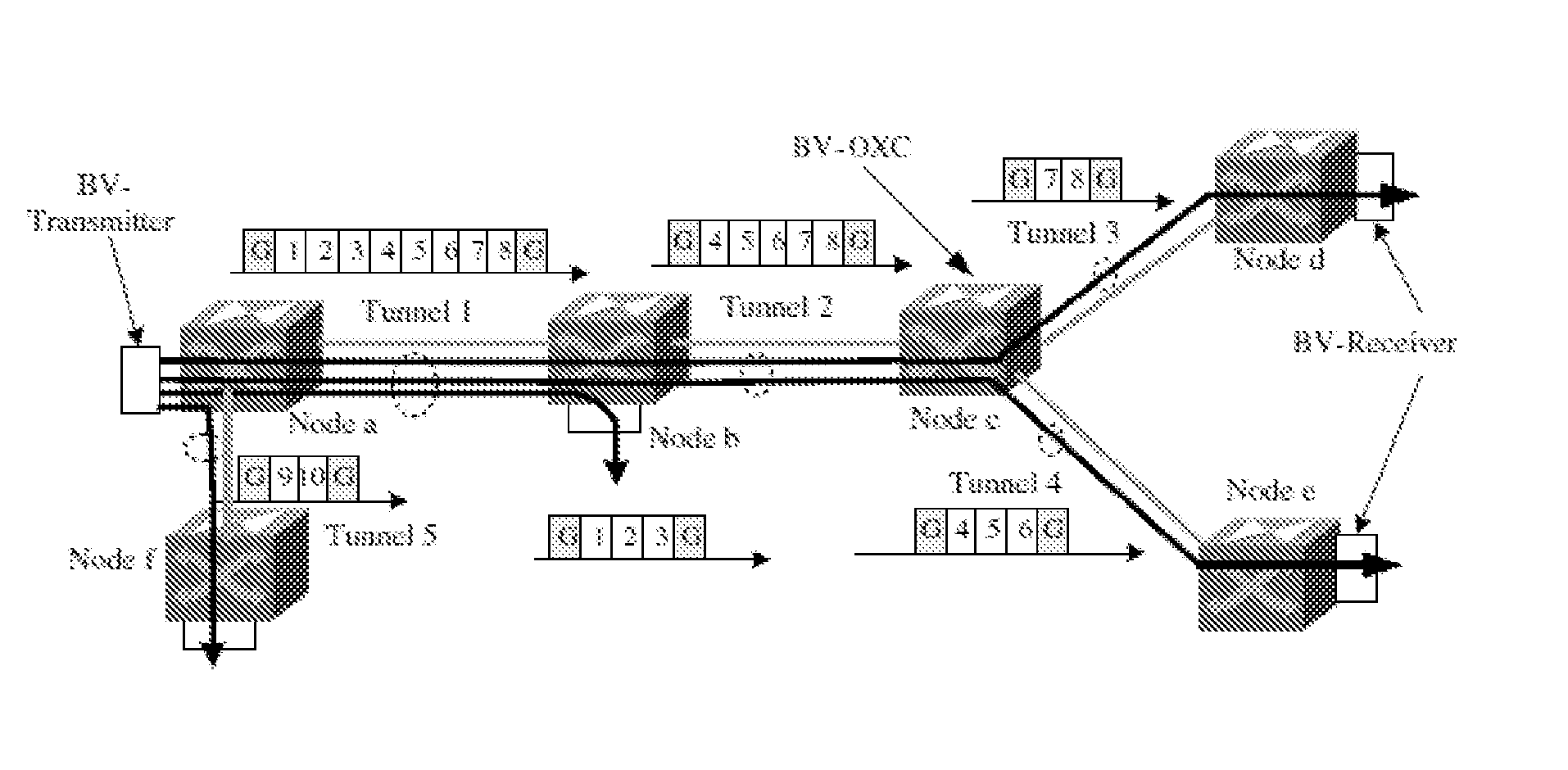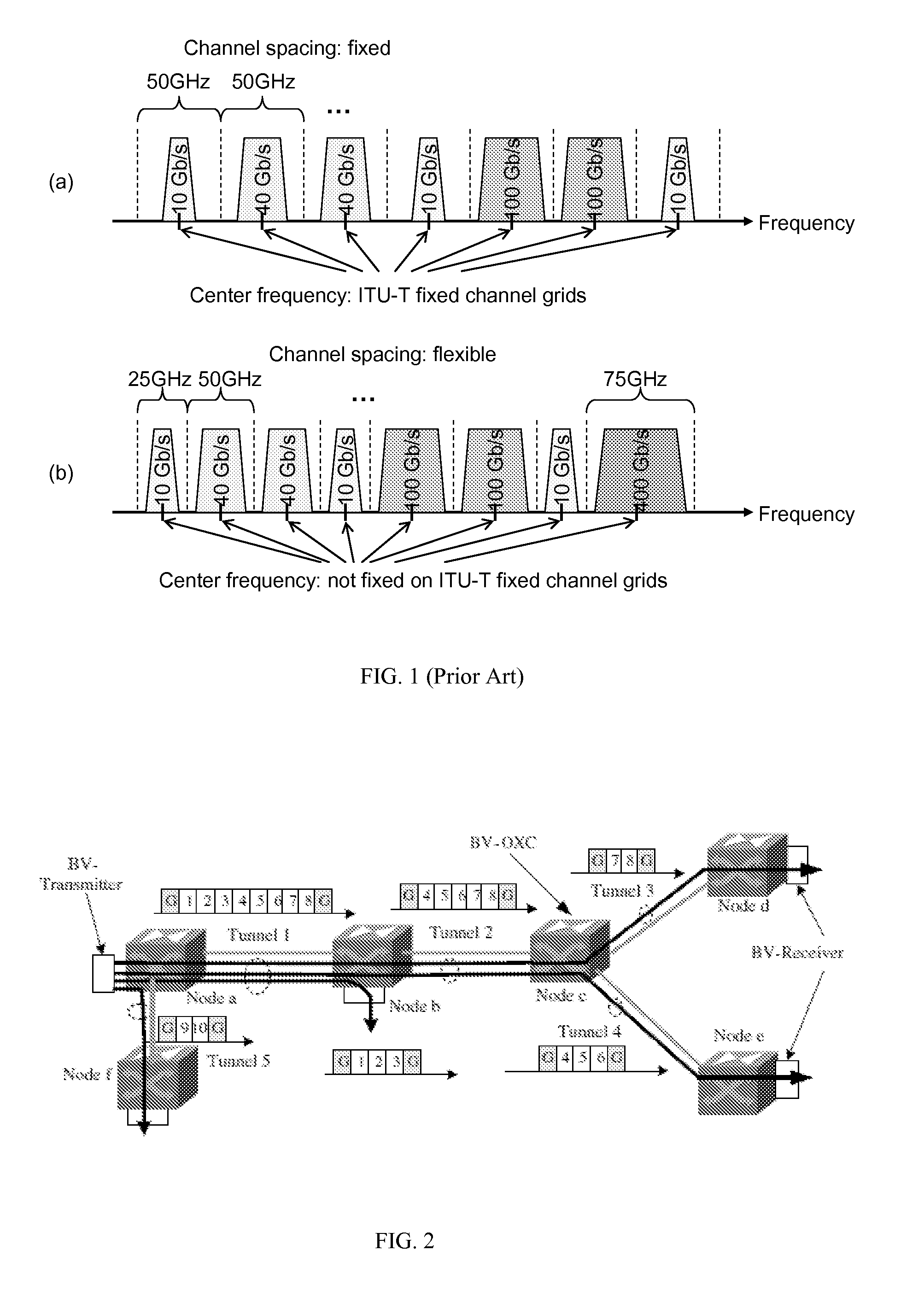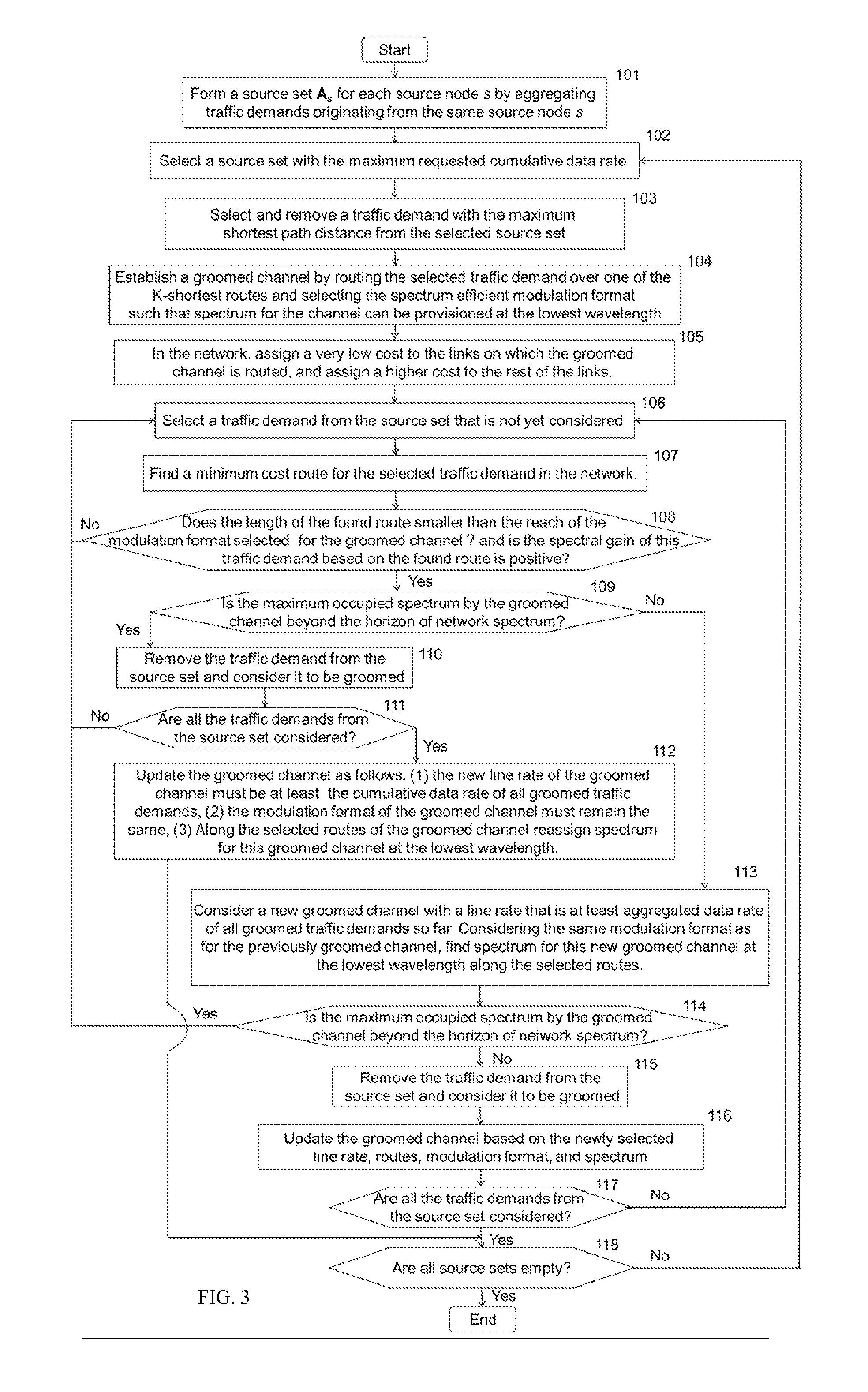Grooming Multicast Traffic in Flexible Optical Wavelength Division Multiplexing WDM Networks
- Summary
- Abstract
- Description
- Claims
- Application Information
AI Technical Summary
Benefits of technology
Problems solved by technology
Method used
Image
Examples
Embodiment Construction
[0029]The present invention is directed to a novel computer implemented method, namely. Here, we design the first procedure, namely distance-adaptive and fragmentation-aware all-optical traffic grooming (DFG) procedure, which addresses the all-optical traffic grooming problem while considering the transmission reach constraints. The DFG procedure provisions traffic demands in optical channels such that the spectrum requires for guard bands is minimized. The DFG procedure provisions optical channels such that network fragmentation [APatel3] is minimized while ensuring the transmission reach constrains over flexible-grid WDM networks.
[0030]In the inventive DFG procedure, the traffic demands originated from the same source node s are aggregated in a source set As. The procedure first forms a source set As for each source node s in the network. The traffic demands from the same source set can potentially be aggregated into the same optical channel (referred to as optical tunnel or groom...
PUM
 Login to View More
Login to View More Abstract
Description
Claims
Application Information
 Login to View More
Login to View More - R&D
- Intellectual Property
- Life Sciences
- Materials
- Tech Scout
- Unparalleled Data Quality
- Higher Quality Content
- 60% Fewer Hallucinations
Browse by: Latest US Patents, China's latest patents, Technical Efficacy Thesaurus, Application Domain, Technology Topic, Popular Technical Reports.
© 2025 PatSnap. All rights reserved.Legal|Privacy policy|Modern Slavery Act Transparency Statement|Sitemap|About US| Contact US: help@patsnap.com



